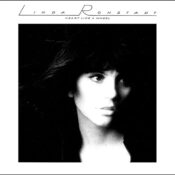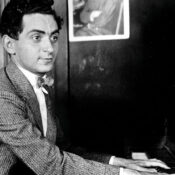Prince was only 24 years old in 1982 when he partied like it was 1999. That multi-platinum double-album announced Prince as one of the biggest stars of the early 1980s and made him one of the (at the time) rare Black artists to receive frequent airplay on the nascent MTV. Just two years later, Prince returned with a new album and a new movie to go with it. Both were called Purple Rain, and that one-two punch cemented Prince as a superstar. Here’s the story by the numbers.
A Two-Pronged Project
Purple Rain trailer (Uploaded to YouTube by Rotten Tomatoes Classic Trailers)
The genesis for the album/film project came from Prince himself. Following the impact of 1999, Prince told his manager at the time, Bob Cavallo, that renewal of his contract would depend on whether or not Cavallo could find the artist a movie to headline. When multiple studios stonewalled his efforts, Cavallo decided that he would produce the movie himself. Using Prince’s plot outline for the story, Cavallo hired William Blinn to write a screenplay. The creator of Starsky & Hutch, Blinn had won a Peabody Award for the classic Brian’s Song and Emmys for Brian’s Song and Roots, in addition to being a multiple nominee for his work on the Fame TV series. Film editor Albert Magnoli landed his first directorial gig with the film; Magnoli made some significant revisions to the screenplay, reportedly making the story less dark in nature.
Too Many Songs to Count
“Purple Rain” (Uploaded to YouTube by Prince)
Prince and his band the Revolution started working on the album in July of 1983, three months before shooting started on the film. All of Prince’s previous albums had featured just him as the primary musician, but this time the credits read “produced, arranged, composed, and performed by Prince and the Revolution.” One song that would appear on the soundtrack, “Baby I’m a Star,” had been written by the end of 1981; it was one of three songs for the album and film that was recorded live at a show at Minneapolis’s First Avenue club (also a principal setting in the film) in August of 1983 (along with “I Would Die 4 U” and “Purple Rain”). During production, Magnoli’s request for another song that would reflect the parental conflict that was so present in the film led Prince to write and record “When Doves Cry” in less than a day. Those four songs joined the other tunes written specifically for the project: “Let’s Go Crazy;” “Computer Blue;” “The Beautiful Ones;” “Darling Nikki;” and “Take Me with U.”
“Jungle Love” by The Time (Uploaded to YouTube by The Time)
In addition to the nine songs that would make up the Purple Rain album, Prince was also busy writing, co-writing, producing, and/or performing on the film’s songs by Morris Day and The Time and Apollonia 6, sometimes under a variety of aliases. Prince co-wrote both The Time’s “Jungle Love” and “The Bird,” on which he also played synthesizer and guitar, respectively. Those two songs would feature on The Time’s album, Ice Cream Castle, which would be released between the Purple Rain album and film. As for Apollonia 6’s “Sex Shooter,” Prince wrote and produced it in addition to handling drum programming and playing synth. The self-titled Apollonia 6 album would be released in the fall of 1984.
A Couple of Dozen Musicians
With the exception of veteran actor Clarence Williams III (as the father of Prince’s character, The Kid) and Italian horror royalty Olga Karlatos (as The Kid’s mother), the majority of the cast was simply made up of the musicians from the various bands playing fictionalized versions of themselves. Prince associate Billy Sparks played First Avenue boss Billy. The Revolution included its then current membership: Wendy Melvoin (guitar); Lisa Coleman (keyboard); “Bobby Z” Rivkin (drums); “Doctor” Matt Fink (keyboard); and Mark Brown (aka Brown Mark, bass). Dez Dickerson, who played guitar on the 1999 album, appeared fronting his band, the Modernaires. Back-up singer Jill Jones played herself. The totality of the then-current version of The Time appeared, including Morris Day (lead singer), Jerome Benton (valet, etc.), Garry “Jellybean” Johnson (drums), Mark Cardenas (keyboard), Gerry Hubbard Jr. (bass), “St.” Paul Peterson (keyboards), and Jesse Johnson (guitar). In addition to the main role played by Apollonia Kotero of Appolonia 6, bandmates Brenda Bennett and Susan Moonsie played themselves.
First Album, Then Movie
“When Doves Cry” (Uploaded to YouTube by Prince)
The Purple Rain album started hitting stores on June 25, 1984, but lead single “When Doves Cry” had been sent to radio in May. “Doves” began to rocket up the charts, driving interest in both the record and film. By July 7, it was Prince’s first #1 song in America; it would sit atop the Hot 100 for five weeks, still holding the spot when the movie opened on July 27. Second single “Let’s Go Crazy,” released the week before the movie opened, hit number one by the end of September.
Purple Rain’s arrival in movie theaters did the seemingly impossible that summer; it dislodged Ghostbusters from the #1 spot at the box office after seven straight weeks of record-breaking domination. Though Ghostbusters would reclaim the top a week later, Rain was set for a healthy run that would see the film earn 10 times its $7 million budget. While it didn’t crack the Top Ten moneymaking films in a record-shattering year that included Ghostbusters and Indiana Jones and the Temple of Doom, Purple Rain did take the 11th spot.
“Let’s Go Crazy” (Uploaded to YouTube by Prince)
But the album proved to be the true juggernaut. Powered by five hit singles, Purple Rain took #1 on the album charts in August and didn’t let go for an astonishing 24 weeks. To that point, only The Beatles and Elvis had managed the trick of having a #1 film, song, and album simultaneously, but Prince and the Revolution joined that company. The album’s initial chart run was 122 straight weeks overall. The album is certified to have sold over 25 million copies worldwide, making it one of the all-time best-sellers. At the 1985 Academy Awards, Purple Rain took home the Oscar for Music (Original Song Score).
Five Solid Hits, Plus Three
All told, Purple Rain generated eight hit songs between the title album, Apollonia 6’s eponymous entry, and The Time’s Ice Cream Castle. In addition to “When Doves Cry” and “Let’s Go Crazy,” Prince scored with the title track (#2), “I Would Die 4 U” (#8), and “Take Me with U” (#25). The Time’s “Jungle Love” hit #20, and “The Bird” cracked the Top 40 at #36. Apollonia 6’s “Sex Shooter” only made it to #85 on the Hot 100, but it did much better on the U.S. R&B Chart (#19) and the Dance Chart (#32).
Double Recognition
The Library of Congress has enshrined both the movie and the album in, respectively, the National Film Registry and the National Recording Registry. Both met the criteria for being “culturally, historically, or aesthetically significant.” In a record year at the movies and a year loaded with huge and historic albums by the likes of Tina Turner, Bruce Springsteen, and Madonna, Prince didn’t just make a dent in the landscape; he was absolute monarch of the charts and briefly knocked out one of the biggest #1 films of the decade.
While the double success of Purple Rain was a peak moment for Prince, it’s only one snapshot in a life filled with hit songs, achievements, and accolades. With so many awards that it’s almost impossible to list them all, and his dozens of songs that he wrote for other artists, not to mention guest appearances, his presence was pervasive. Rock and Roll Hall of Fame induction was inevitable. And his more than 100 million albums sold made him one of the best-selling artists in history. For the summer of 1984, no one was ever bigger than Prince.
Become a Saturday Evening Post member and enjoy unlimited access. Subscribe now




Comments
You have the Purple Rain album cover, but the Parade vinyl. That’s kinda embarrassing.
A really fascinating look at Prince and ‘Purple Rain’ at 40; both the album and his film. The album cover alone was sooo 80’s only, state-of-the-art. The image, setting and that purple handwriting? The music was still the bottom line of Prince’s signature accomplishments.
He might not have been everyone’s cup of tea, but it didn’t (and doesn’t) matter. Some great links here, thank you. in addition to all he had going on for himself otherwise, he was busy collaborating with other artists including Chaka Khan’s ‘I Feel For You’ and Sheena Easton’s ‘Sugar Walls’; two of my own favorites. Prince’s influence was indelible on the latter.
His recognition per the final two paragraphs here summarize most of what needs to be said. I think Prince would love this anniversary feature here on the Saturday Evening Post website as well, but like so many talented artists, was gone far too soon to get the chance.